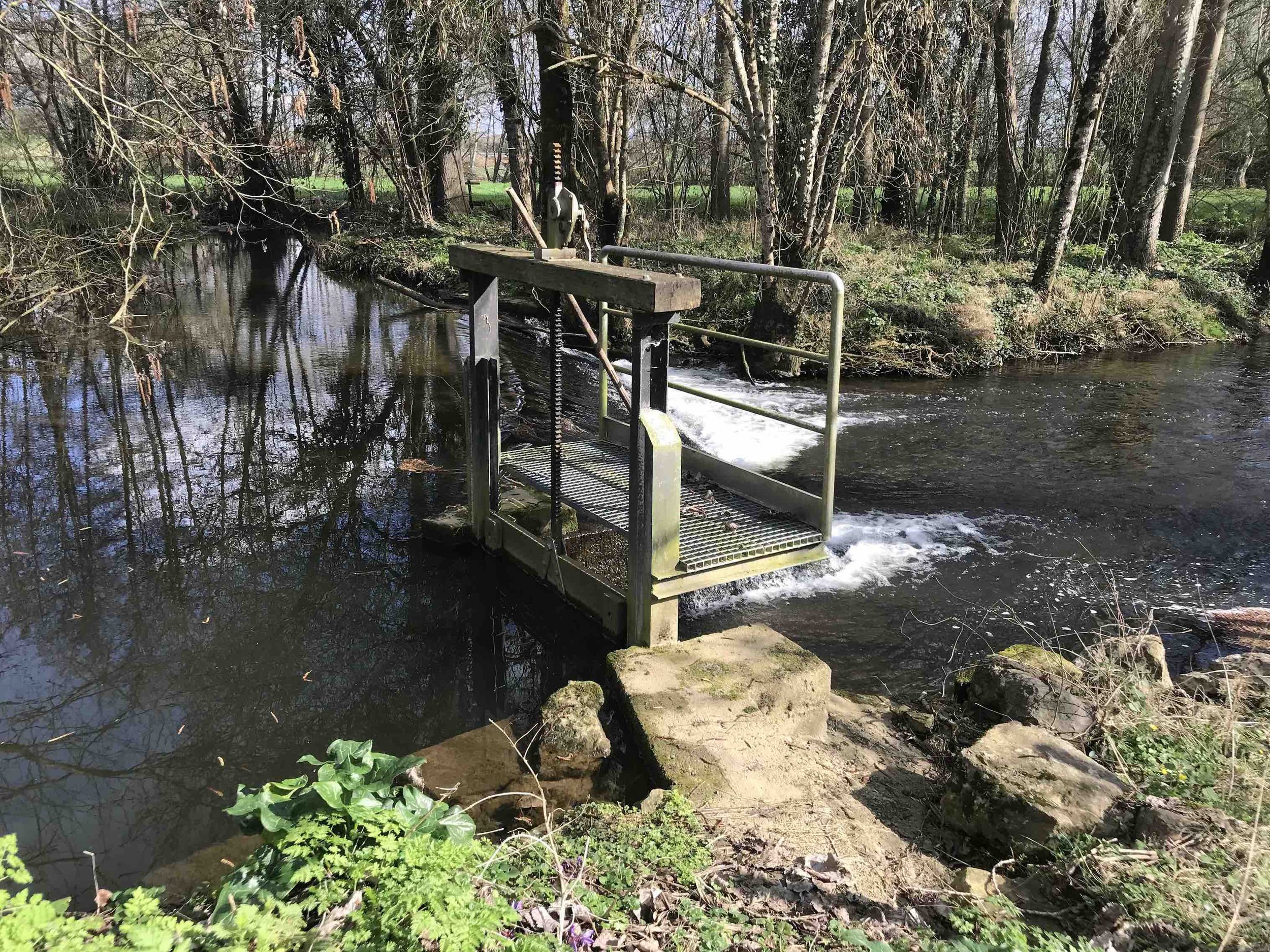The Water Wheel, Sluice Gates & Electricity!
My dream is for the water wheel to make electricity. I'm thinking enough to power driveway lights at night in the winter.
I did a little experiment once. With the help of an engineer friend, we hooked up the gearwheel’s rotating shaft to a car battery and a led floodlight. We opened the sluice fully to let the full force of the river turn the water wheel, and bingo! Result!! The wheel produced electricity!!
The floodlight shone, and it was brilliant. But the turbulence caused by the water wheel whizzing around at maximum speed, and the thundering noise was too intense for me.
Renewable energy is a glorious thing, even crudely done, but I’m like a cat. I like tranquility. So once past the initial excitement of having produced electricity for free, I was like, OK, can we close the sluice gate now?
In any case the battery wore out after a while because one of the gearwheels is too small. I have to install a bigger one and try again.
I’ll return to that project at some point in the not-too-distant future. We found the bigger gearwheel but it’s just sitting there for now, waiting for a gearhead to materialize so it can all be figured out.
About the wheel itself. We have what’s known as an undershot water wheel design. Also known as a stream wheel. The force of the river flow on the wheel paddles make it turn. Open the sluice gate right in front of the wheel, and the additional volume of water makes the wheel turn faster. Hydro power! I love it.
A rotating shaft connects the water wheel to the main gearwheel inside the mill.
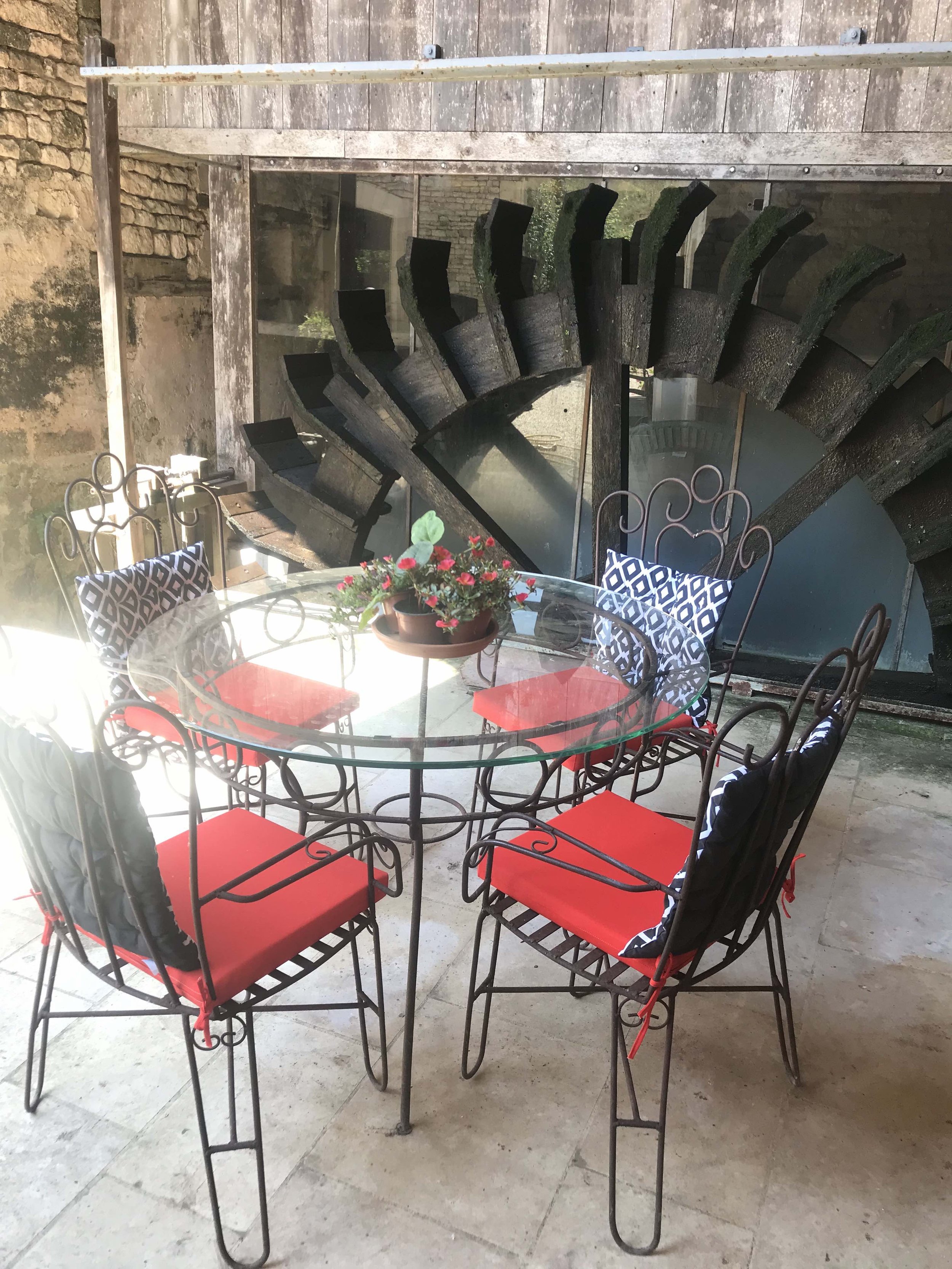
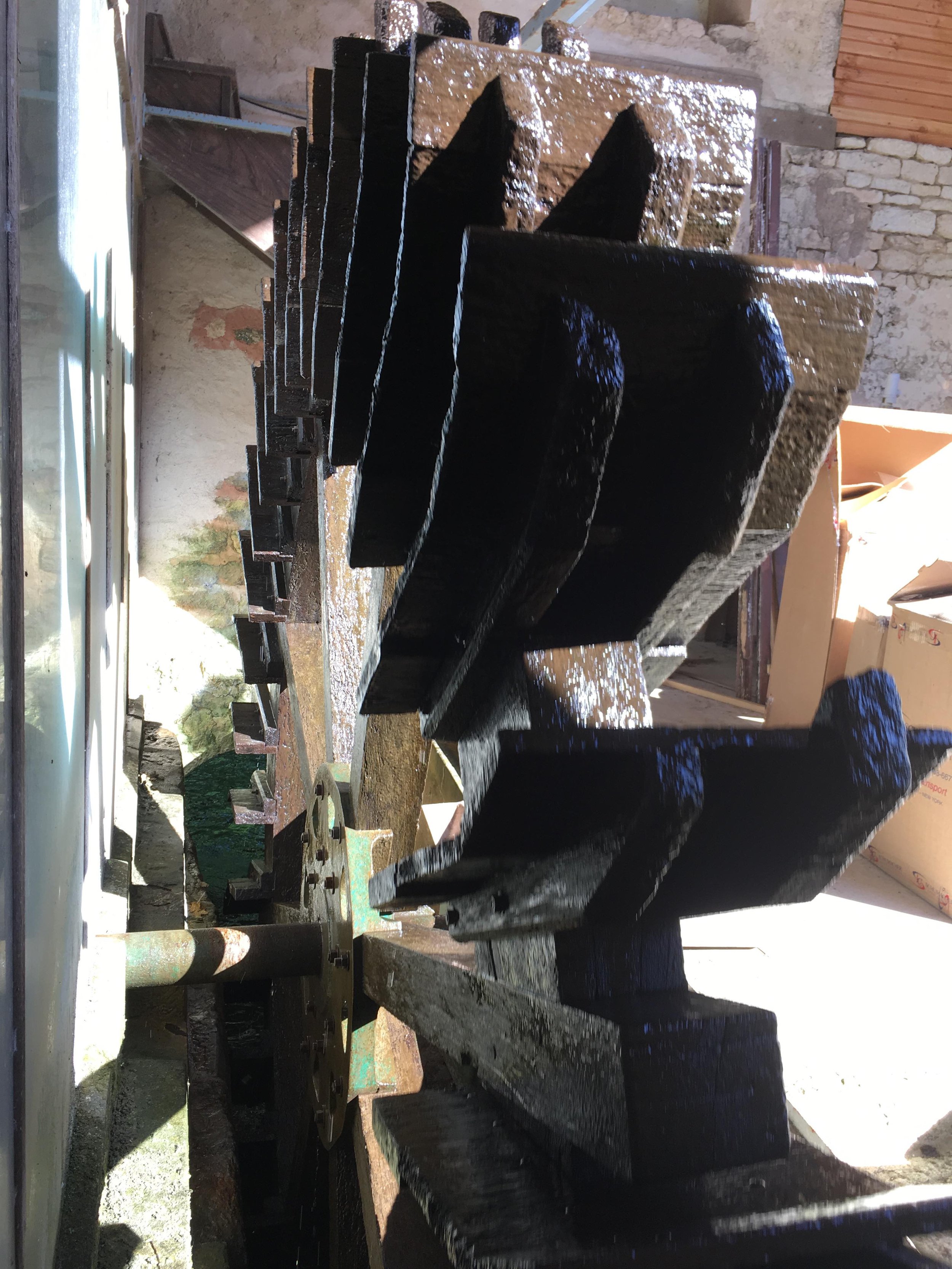
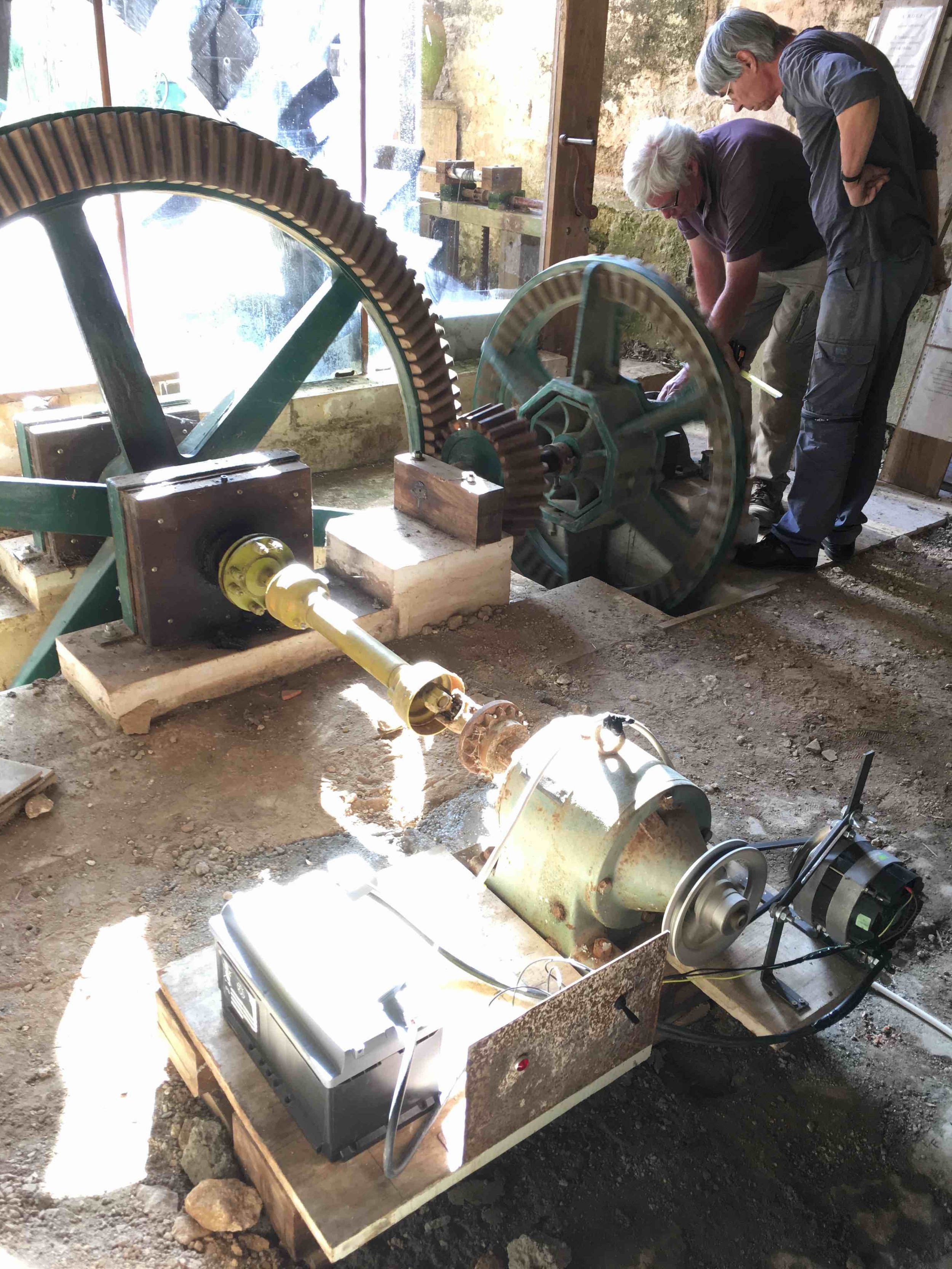
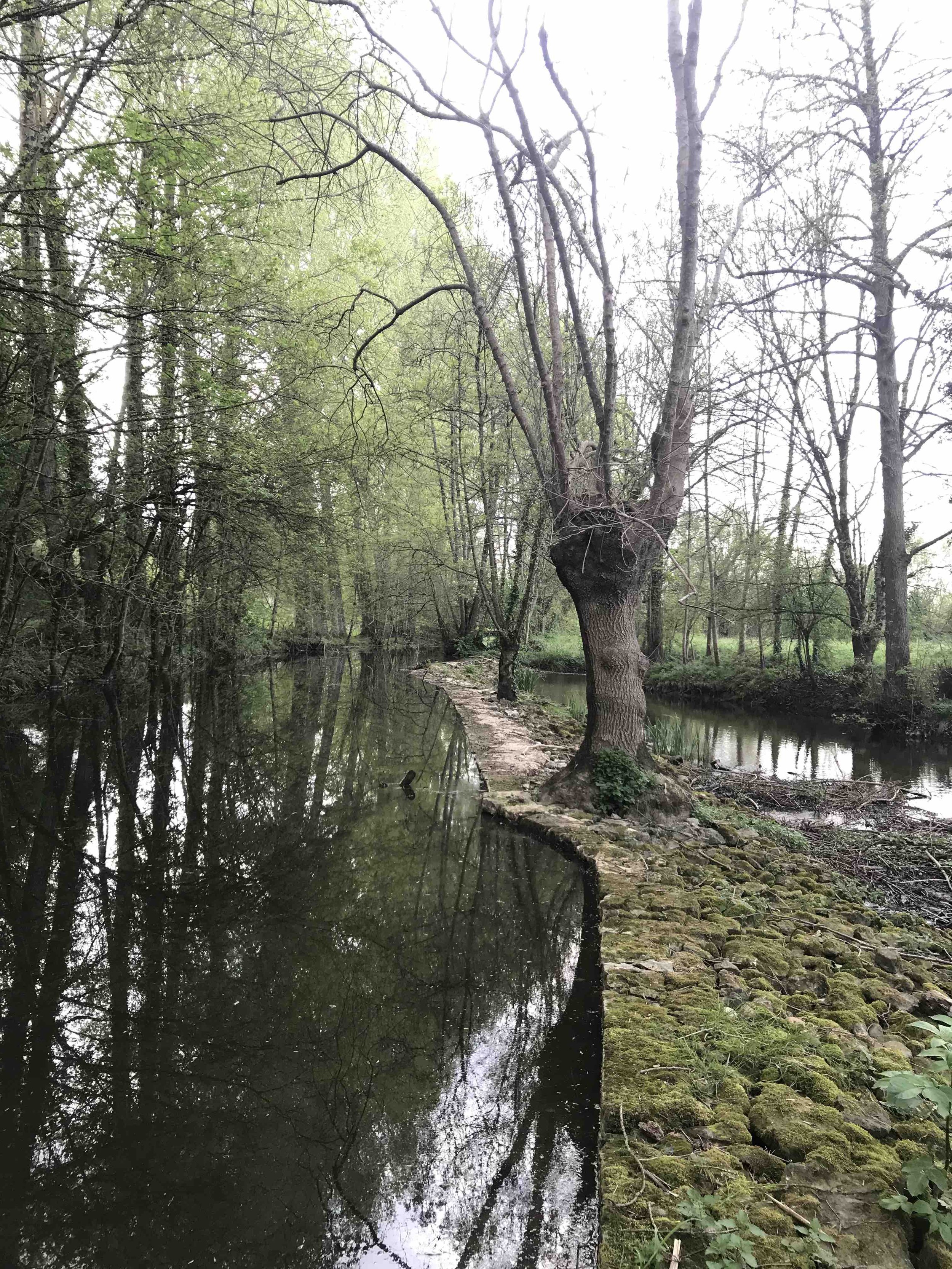
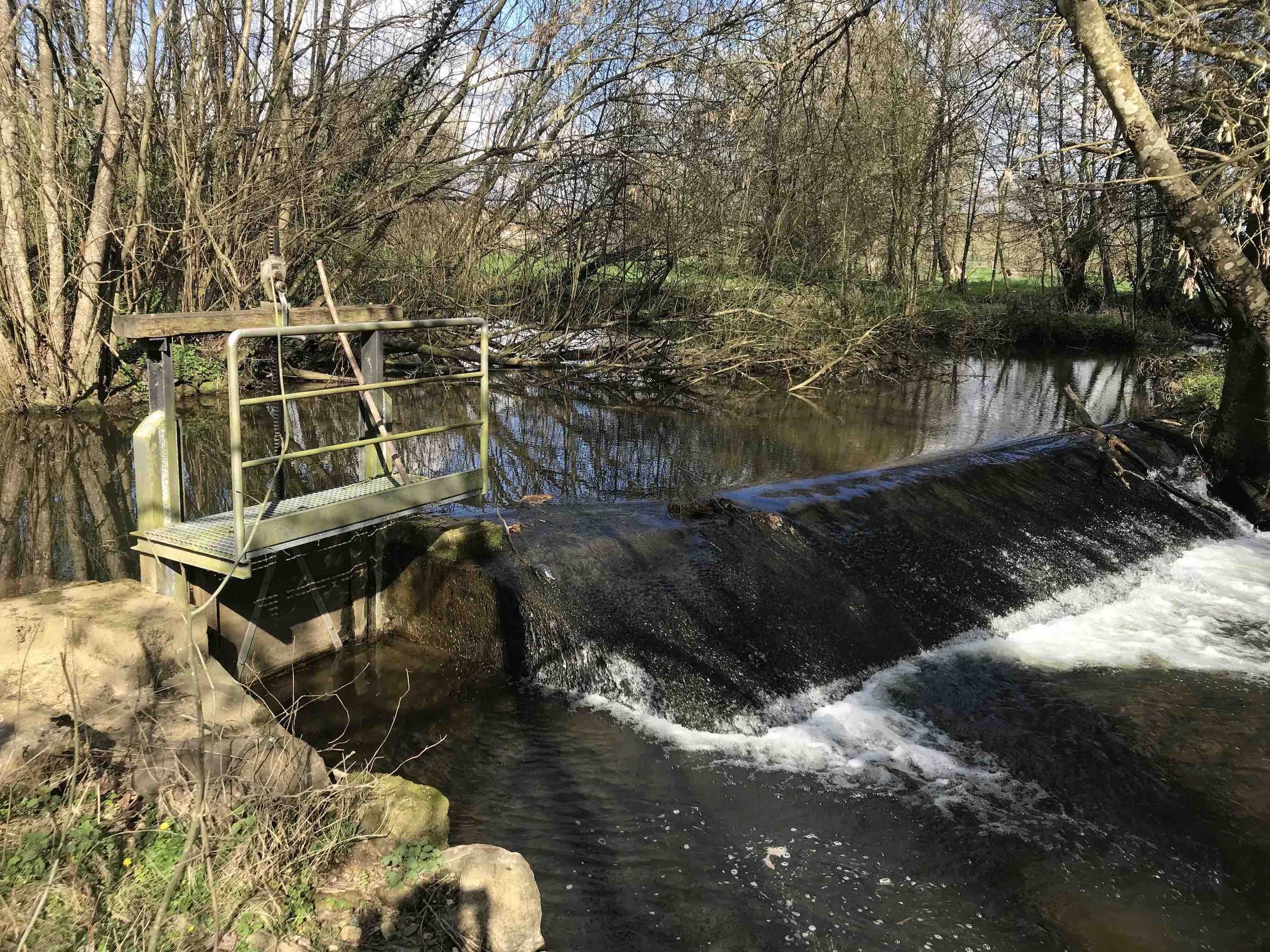
Upstream, a man-made levee shores up the river, channeling it straight towards the water wheel. Today, that levee has holes in it so a lot of water runs away, down into a secondary river, which is so gentle, it’s more like a stream.
I hope to fix that levee at some point.
For the wheel to turn efficiently, the water level in front of the sluice needs to be about 1.5 meters higher than the water level under the wheel. The drop makes the wheel turn.
There are several sluices upstream and downstream. Part of managing this property involves controlling them. I like this job. It’s seasonal. And you only do it when necessary.
In the summer, when it’s sunny and dry and the water level is low-ish, if you open a sluice for too long, the river level drops drastically. Not good. The river banks become exposed and this makes me anxious, because when that happens, the roots of the trees planted along the river’s edge become exposed. And when that happens, the muskrats (a major pest) and my ducks and geese have a field day picking at the exposed dirt between the complex web of tree roots.
Erosion freaks me out. Lack of water freaks me out. When my husband plays with the sluice gates, it freaks me out.
Luckily, as soon as you close the sluice gates, if indeed they were open for too long, the river recovers fairly quickly.
In the winter, managing the sluice gate is a different story. When it rains and the river expands, it’s important to keep the sluice gate open. Especially the important one way downstream. That one is big! Excess water flows over the spillway next to the gate.
If the sluice gate’s closed, and the water can’t get over the spillway fast enough, the water level in the river rises up quite high below the water wheel.
Without that crucial drop in water levels between the front and the back of the wheel, stuck in all that water, the wheel stops turning.
Sometimes, in super torrential winter rains, the river overflows and floods the surrounding fields. It’s eerie when that happens because there’s water everywhere! It doesn’t happen every year, thank goodness. I didn’t buy a lake-side property! Even with all the sluice gates open, the water can’t get out fast enough. There’s so much of it, the wheel stops.
I love that the waterwheel is sheltered by a covered patio. Its roof connects the Wheel House and the Main House. The view from the patio of the river upstream is lovely.
Because it’s sheltered and has a great view, this patio makes a wonderful chill spot. You can sit out there, rain or shine, and watch the wheel gently turning, or watch the geese and ducks on the river upstream. It's very relaxing and beautiful.
Between the wheel house and the main house there’s a connecting wall. It’s behind the water wheel. The wall has this lovely arch at the bottom, where the water passes through.
On a clear day, when the angle of the sun is just right, you can see the original stones under the arch, behind the wheel. They cover the river bed, like a stone floor, holding the ground in place to prevent erosion. The stones look really old. Sometimes you see crayfish crawling across them.



